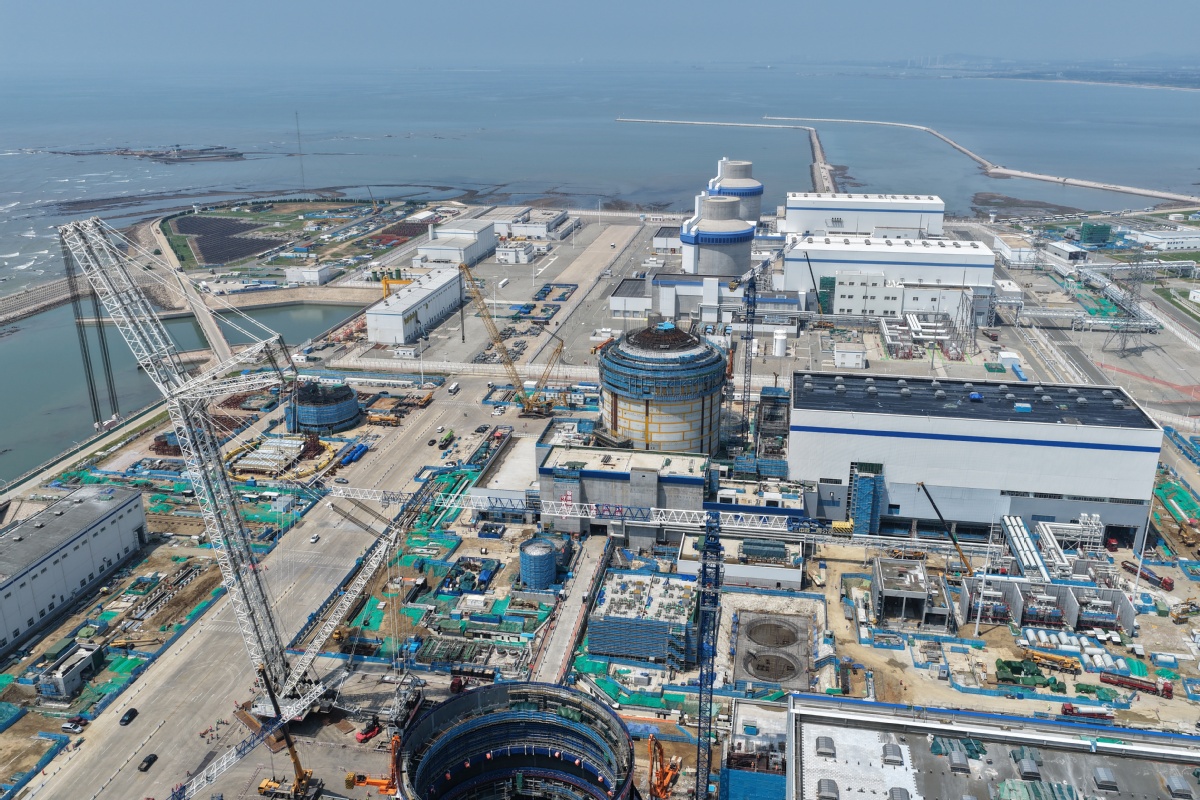Nuclear energy heating project to expand service coverage


China's pioneering nuclear energy heating project in Haiyang, Shandong province, which has shown remarkable effectiveness in reducing carbon emissions and enhancing air pollution control, is anticipated to greatly expand its service coverage in 2026, according to Shandong Nuclear Power Co, the operator of the facility.
While continuing to serve residents in Haiyang and Rushan counties, its cost-effective and environment-friendly heating is poised to reach Qingdao in 2026, the company said.
Launched in 2019, the first phase of the nuclear energy heating project, dubbed "Warm-U-Clear No 1", in the Haiyang nuclear power plant provided carbon-free heating to buildings with a total floor area of 700,000 square meters, followed by the second phase that covered 5 million sq m in 2021.
Its third phase went into operation in 2023 with a capability to serve 12.5 million sq m.
To date, the nuclear energy heating project has supplied 14.32 million gigajoules of heat, equivalent to saving standard coal consumption by about 1.29 million metric tons and reducing carbon dioxide emissions by 2.36 million tons, Shandong Nuclear Power Co said in a statement.
The project has cut sulfur dioxide emissions by 15,000 tons and nitrogen oxides by 14,000 tons, the company added.
The transition to carbon-free heating has made a substantial impact on air quality in Haiyang and Rushan. In Haiyang, the average concentration of PM10 particulate matter has fallen by 43 percent during the heating season compared to levels before the adoption of nuclear heating, while Rushan has seen an 8.7 percent reduction.
The two counties also experienced 13.7 percent and 12.8 percent drop in the average concentration of nitrogen dioxide, respectively. Previously, both Haiyang and Rushan depended on fossil fuel for heating supply.
The Haiyang nuclear power plant now has two reactor units in operation. While another two units are under construction and are expected to go into operation in 2027.
With the completion and operation of subsequent units, "Warm-U-Clear No 1" is expected to provide clean heating for Qingdao in 2026, Shandong Nuclear Power Co said, adding its projected long-term heating capacity will reach up to 200 million sq m.
Wang Linhui, an executive with the company's department of chemical and environmental protection, said that a pump station for heating supply will be built for the No 3 unit that is under construction.
"We are striving to achieve a state of readiness for providing heat to Qingdao by the conclusion of next year," he noted.
In addition to delivering notable environmental advantages, the heating supply project has significantly enhanced the energy utilization efficiency by harnessing heat that would otherwise have been released into the environment.
Wang said that the Haiyang plant has also been utilizing the even lower grade of heat to implement a mangrove planting initiative. To date, over 10,000 Kandelia obovata, a species of mangrove tree, have been planted.
Mangrove exists mainly in coastal areas south of the 30 degrees northern latitude, and Haiyang city is around 37 degrees northern latitude. The initiative maximizes the use of thermal discharge to warm up the waters where Kandelia obovata are planted.
Additionally, shelters are established to protect the plants from the harsh winter conditions, ensuring their survival, Wang said.
"Over time, these Kandelia obovata are likely to acquire cold-resistant traits, and then they may be able to engage in extensive breeding," he said.
According to Shandong Nuclear Power Co, the No 5 and No 6 reactor units in Haiyang nuclear power plant, the construction of which is now under preparation, are expected to be completed and go into operation in 2032. By then, its annual power generation capacity will reach 60.9 billion kWh, enough to meet electricity demands of 70 million people.
That will help save standard coal consumption by almost 18.6 million tons, reduce carbon dioxide emissions by 48.63 million tons, which is equivalent to planting 134,000 hectares of broad-leaved forests, it said.























